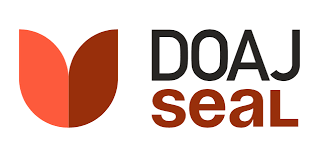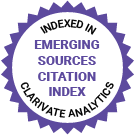JMIR Research Protocols
Protocols, grant proposals, registered reports (RR1)
Editor-in-Chief:
Amy Schwartz, MSc, Ph.D., Scientific Editor at JMIR Publications, Ontario, Canada
Impact Factor 1.5 CiteScore 2.4
Recent Articles

Neuropathic pain (NP) is characterized as pain arising from lesions of the somatosensory nervous system. However, NP-like features have been found in several chronic secondary musculoskeletal (MSK) pain conditions in the absence of detectable lesion or damage to the somatosensory pathways. Emerging evidence has demonstrated associations between NP-like symptoms and altered neural activity within brain regions implicated in sensory perception and affective-emotional processing of pain with consistent findings of abnormal activity in the right insula (RIns) cortex and dorsal anterior cingulate cortex (dACC). Electroencephalography neurofeedback (EEG-NF) is a brain-computer interface biofeedback technique that allows individuals to self-regulate the real-time cortical brain activities of the regions of interest.

Heterogeneity in outcome selection and measurement methods has been noted in studies examining the minimization of physical restraint use in adult intensive care units (ICUs). This variability undermines evidence synthesis, limiting the development of evidence-based approaches to minimize restraint use and improve patient outcomes.

Heavy metals present in the environment, including lead, cadmium, and mercury, pose significant health risks to pregnant women and fetal development through food, water, and air contamination. Exposure to these metals has been linked to miscarriage, low birth weight (LBW), preterm birth, and developmental issues in children. The mecha-nism of oxidative stress, characterized by increased 8-hydroxy-2'-deoxyguanosine (8-OHdG) and malondialdehyde (MDA) levels, contributes to DNA damage, genomic insta-bility, and adverse pregnancy outcomes. Additionally, DNA methylation changes in-duced by metal exposure may further exacerbate these risks. Certain micronutrients play a crucial role in heavy metal detoxification, and Moringa oleifera, a locally availa-ble plant rich in antioxidants and chelating compounds, has demonstrated protective effects against mercury (Hg), lead (Pb), and cadmium (Cd) toxicity in experimental studies. However, intervention studies on pregnant women remain scarce.


The ability to perform complex tasks has seen artificial intelligence (AI) used to support radiology in clinical settings, including lung cancer detection and diagnosis. Evidence suggests that AI can contribute to accurate diagnosis, reduce errors, and improve efficiency. The National Health Service England (NHSE)–funded Artificial Intelligence Diagnostic Fund (AIDF) is currently supporting 12 National Health Service (NHS) networks to implement AI for chest diagnostic imaging. There is, however, limited evidence on real-world AI implementation and use, including staff, patient, and caregiver experience, and costs and cost-effectiveness. A National Institute for Health and Care Research Rapid Service Evaluation Team Phase 1 evaluation provided insights into the early implementation of these tools and developed a framework for monitoring and evaluation of AI tools for chest diagnostic imaging in practice.

Social media use among adolescents and young adults has increased exponentially over the last decade, with TikTok being one of the most popular platforms. In Spain, 61% of adolescents use TikTok, spending an average of 1.5 hours daily on the app. This phenomenon coincides with an alarming increase in the prevalence of self-harm and suicidal behavior among adolescents and young adults. Moreover, suicidal behavior is one of the leading causes of morbidity and mortality in this age group.

Bioactive compounds, such as human milk oligosaccharides (HMOs), impact the development of the intestinal microbiome and immune maturation in early life. They have been shown to result in positive benefits, including improved gut health, reduced frequency of infections, and age-appropriate growth when added to infant formula. However, data supporting the added value of including these HMOs in early-stage infant formula is currently lacking among Chinese infants.

Sub-Saharan Africa (SSA) bears the highest global burden of under-5 mortality, with congenital heart disease (CHD) as a major contributor. Despite advancements in high-income countries, CHD-related mortality in SSA remains largely unchanged due to limited diagnostic capacity and centralized health care. While pulse oximetry aids early detection, confirmation typically relies on echocardiography, a procedure constrained by a shortage of specialized personnel. Artificial intelligence (AI) offers a promising solution to bridge this diagnostic gap.

Patient satisfaction with total knee arthroplasty (TKA) is strongly influenced by alignment between expectations and outcomes. Despite a satisfaction rate of 80-90%, dissatisfaction affects 10-20% of patients and is expected grow with the increasing volume of TKA procedures globally. Misaligned expectations, often driven by unrealistic or overly optimistic recovery views, can lead to unmet goals, dissatisfaction and unnecessary healthcare utilisation. Addressing these gaps through improved pre-surgical education has the potential for enhancing patient satisfaction, optimising outcomes and reducing burden on the healthcare system.


The identification of moderators of exposure-based cognitive behavior therapy (EXCBT) outcome has the potential to: (1) guide the judicious application of the limited resource of EXCBT, and/or (2) identify additional treatment targets for ameliorating the deleterious effects of an identified moderator, thereby enhancing clinical response. Experimental and clinical studies have provided intriguing findings for the moderating influence of positive affect on EXCBT outcomes. Mixed findings for state positive affect (at the time of extinction/exposure trials) as a predictor of EXCBT outcomes stand in contrast to evidence that baseline levels of trait positive affect may be a more effective predictor. As such, questions remain about the best way to assess positive affect as a potential treatment moderator.

Measles and polio pose significant public health challenges globally, particularly in low-resource settings such as the Philippines, where vaccine coverage falls short of the World Health Organization’s (WHO’s) targets, with hard-to-reach populations contributing to the “last mile.” This research addresses the “last mile” challenge in routine immunization efforts by bridging the vaccination gap in marginalized populations.
Preprints Open for Peer-Review
Open Peer Review Period:
-
Open Peer Review Period:
-













